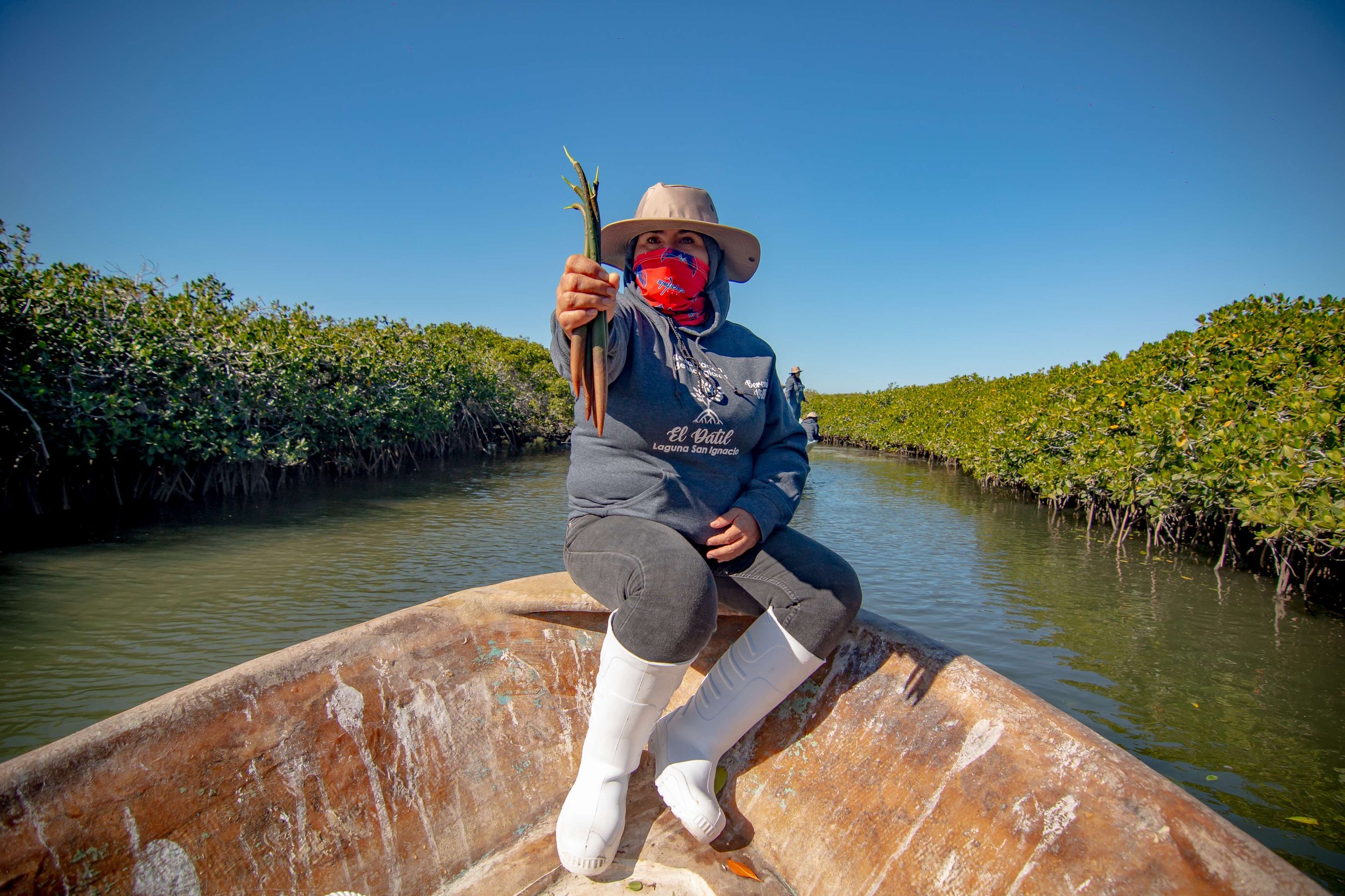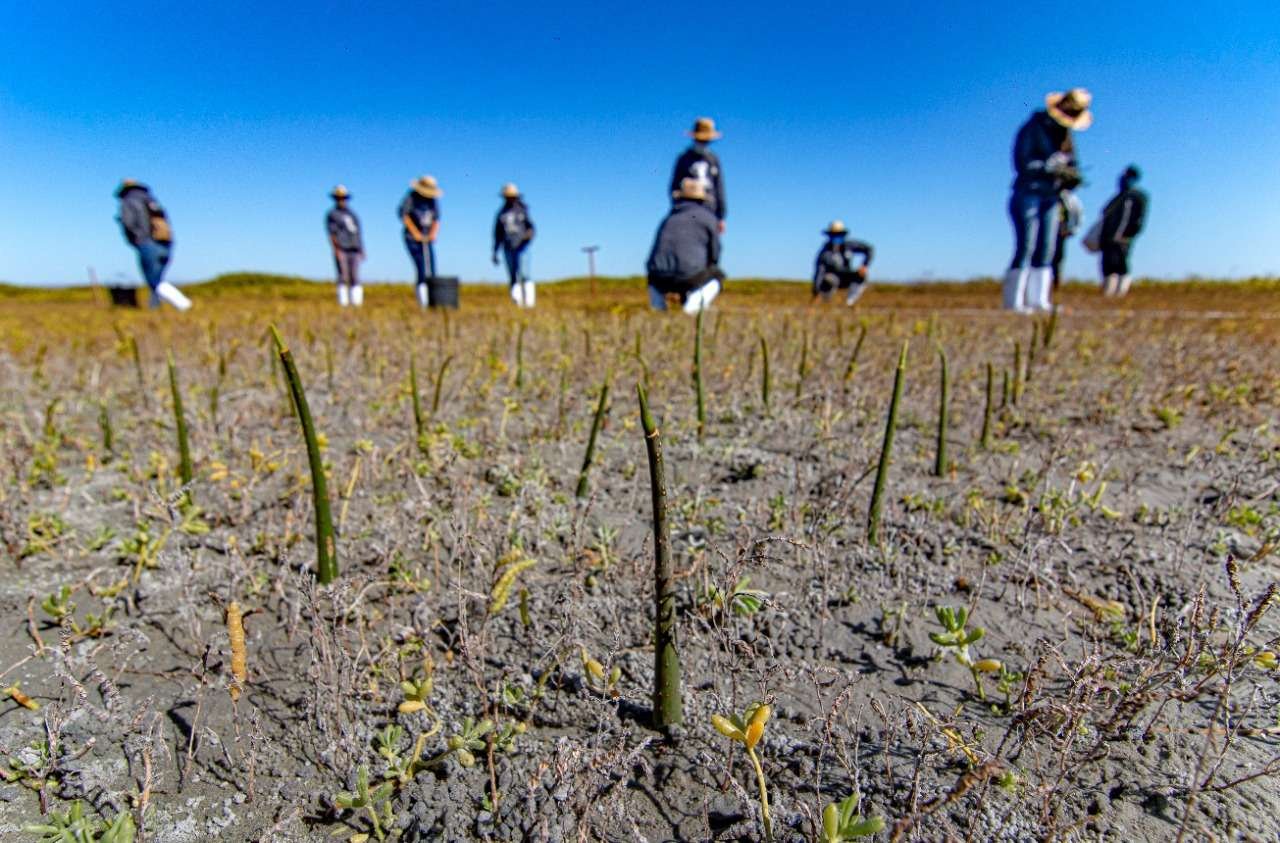Restoring hope: How SeaTrees is protecting marine and coastal ecosystems
As part of the Nature Tech Collective’s mission to drive the adoption of nature tech and foster a nature-positive future, we are dedicated to showcasing the impactful work of our members.
This month we had the opportunity to sit down with SeaTrees to learn how their organisation is protecting marine and coastal ecosystems.
Q: Tell us about SeaTrees & the work you do.
SeaTrees is a program of the 501c3 non-profit Sustainable Surf that develops coastal restoration projects around the world to reverse climate change. We believe the ocean is the hero of our story – to boost biodiversity, support local communities, and reverse climate change.
Through SeaTrees we plant, protect, and restore coastal ecosystems, including kelp and mangrove forests, seagrass meadows, coral reefs, oyster reefs, and coastal watersheds.
SeaTrees funds this work through donations from brands and individuals who are committed to reversing climate change and creating sustainable livelihoods for local communities. We partner with local nonprofit organizations at each project location to manage the restoration and protection work being done, providing a vast array of critical benefits to both the planet and people.
We currently have 24 projects working toward this mission and aim to have 100 projects by 2030.
The most relevant Sustainable Development Goals (SDGs) for our work include SDG 13 (Climate Action), SDG 14 (Life Below Water), and SDG 15 (Life on Land). Our success will be measured by the scale of restoration efforts, the health of the ecosystems our community partners restore, and the lasting impact of restoration efforts on community livelihoods and biodiversity.
“ “The time to act is now. Our oceans and coastal ecosystems are the lifeblood of the planet, and together, we can restore them””
Q: Tell us more about the story behind SeaTrees. How did it get started?
The journey began with a simple but powerful idea: communities and individuals could take tangible action to give back to the ocean. By creating a platform that connects people with restoration projects worldwide, SeaTrees empowers them to make measurable impacts.
Early projects focused on restoring ecosystems like mangroves in Indonesia and kelp forests in California, each highlighting how localized efforts could yield global benefits.
Over the years, SeaTrees has grown through innovative partnerships with brands, artists, and communities. By leveraging collaborations like biodiversity credits and art installations at global climate events like COP, the organization has solidified its role as a leader in ocean restoration.
Today, SeaTrees is not just about planting trees in the ocean; it’s about creating a movement that aligns communities, businesses, and individuals to prioritize the planet’s most vital ecosystems.










Q: Can you tell us more about the challenges SeaTrees is addressing?
A: SeaTrees is working with coastal communities to plant and restore mangrove forests, coral reefs, kelp forests, seagrass beds, oyster reefs, and coastal watersheds. These ecosystems are vital for biodiversity, coastal protection, and carbon sequestration, yet they are being damaged and lost due to climate change and local human impacts, such as pollution and overfishing.
The consequences of inaction are severe: not only will biodiversity be lost, but these ecosystems' ability to mitigate climate change will also diminish.
Q: What are some of the ways that marine and coastal ecosystems can be protected? What is ‘blue carbon’?
A: SeaTrees works with local communities to promote stewardship of marine resources. This includes implementing proven best-practices - actions such as tree planting, coral gardening, invasive species removal, biodiversity monitoring, and enforcement of environmental protections - so that nature has a chance to recover and thrive.
A major focus of Seatrees' work is restoring blue carbon ecosystems—mangroves, seagrasses, and salt marshes—that capture and store carbon from the atmosphere.
Blue carbon refers to the carbon that is absorbed by plants or algae via photosynthesis and then stored in living biomass or buried in sediments. These coastal blue carbon habitats play a critical role in the global carbon cycle and mitigating climate change. By protecting and restoring these areas, we can significantly reduce carbon emissions and enhance biodiversity.
Q: What are the main barriers to taking action & ensuring our ecosystems are protected, as you see it?
A: A key barrier for community-led and grassroots marine restoration efforts is a lack of access to funding. Many coastal communities, particularly in developing countries, have limited resources to implement large-scale projects focused on stewardship and restoration.
Q: Given the recent COP16 biodiversity summit, how do you see the direction of travel in terms of marine and coastal protection?
A: Global forums like COP16 are helping drive positive change and create new opportunities for funding nature-based solutions, and collaboration to support community-led conservation.
There is growing international recognition of the potential for market innovations, like biodiversity credits, which can be paired with emerging nature tech to rapidly scale funding and action on the ground.
Q: Can you share some success stories from your work?
Of course, this SeaTrees episode of Blue Horizons, was recently produced by BBC StoryWorks Commercial Productions and helps bring to life some of the ways our work is supporting communities in the real world.
The series explores our intrinsic connection with the ocean and how it impacts every aspect of our lives – from the ecosystems that support livelihoods to the products we use daily and the water we need to survive.
Q: Where does SeaTrees sit within the broader category of nature tech? How did you find your way to the Nature Tech Collective?
A: We view nature tech as an essential tool for scaling up restoration efforts and improving ecosystem monitoring. The community-led projects we work with represent potential nature tech consumers and users, and we are interested in leveling up their capacity to implement transformative tech solutions.
Equity in conservation requires widespread access to nature tech across all sectors and regions of the world. We want our community partners to be able to implement nature tech solutions themselves, rather than relying on third-party MRV companies. We are looking for nature tech partners that share our commitment to the democratization of nature tech through training programs and capacity building.
We were drawn to the Nature Tech Collective because it offered a collaborative community of like-minded organizations working at the intersection of technology and nature conservation. We see an opportunity to enhance the capacity of our community partners to adopt nature tech solutions, and want to collaborate with others who share this goal.
Being part of the Nature Tech Collective community has provided direct access to other professionals in the nature tech space. Specific benefits include networking, access to interesting webinars, and a platform that we can use to talk about the innovative work we are doing.
Q: How can others support the work you do?
We recently launched our first biodiversity credit project at COP 16. The credits, known as SeaTrees Biodiversity Blocks, follow a peer-reviewed science-based methodology to restore and monitor mangrove forests in Marereni, Kenya. Each credit supports mangrove planting, efforts to prevent illegal logging, biodiversity monitoring, and wages for local livelihood enhancement. We’ve developed these credits in partnership with COBEC, a non-profit based in Kenya with deep community ties.
We are currently developing additional Biodiversity Block projects for coral reef and kelp forest ecosystems. We encourage everyone to support these community-based projects by purchasing SeaTrees Biodiversity Blocks!
To keep up with the latest SeaTrees updates, you can also follow us on our social media channels and sign up for our newsletter.
About the Nature Tech Collective
The Nature Tech Collective (NTC) is a global community of nature tech stakeholders, united by a shared commitment to transform human systems which harm nature, and enhance the conservation and regeneration of our natural world. Our community is composed of representatives from the public and private sector, academia and field-level science, project developers and frontline communities, as well as inventors that build and develop nature tech solutions. Our industry alliance models collaborative intelligence for greater impact.







